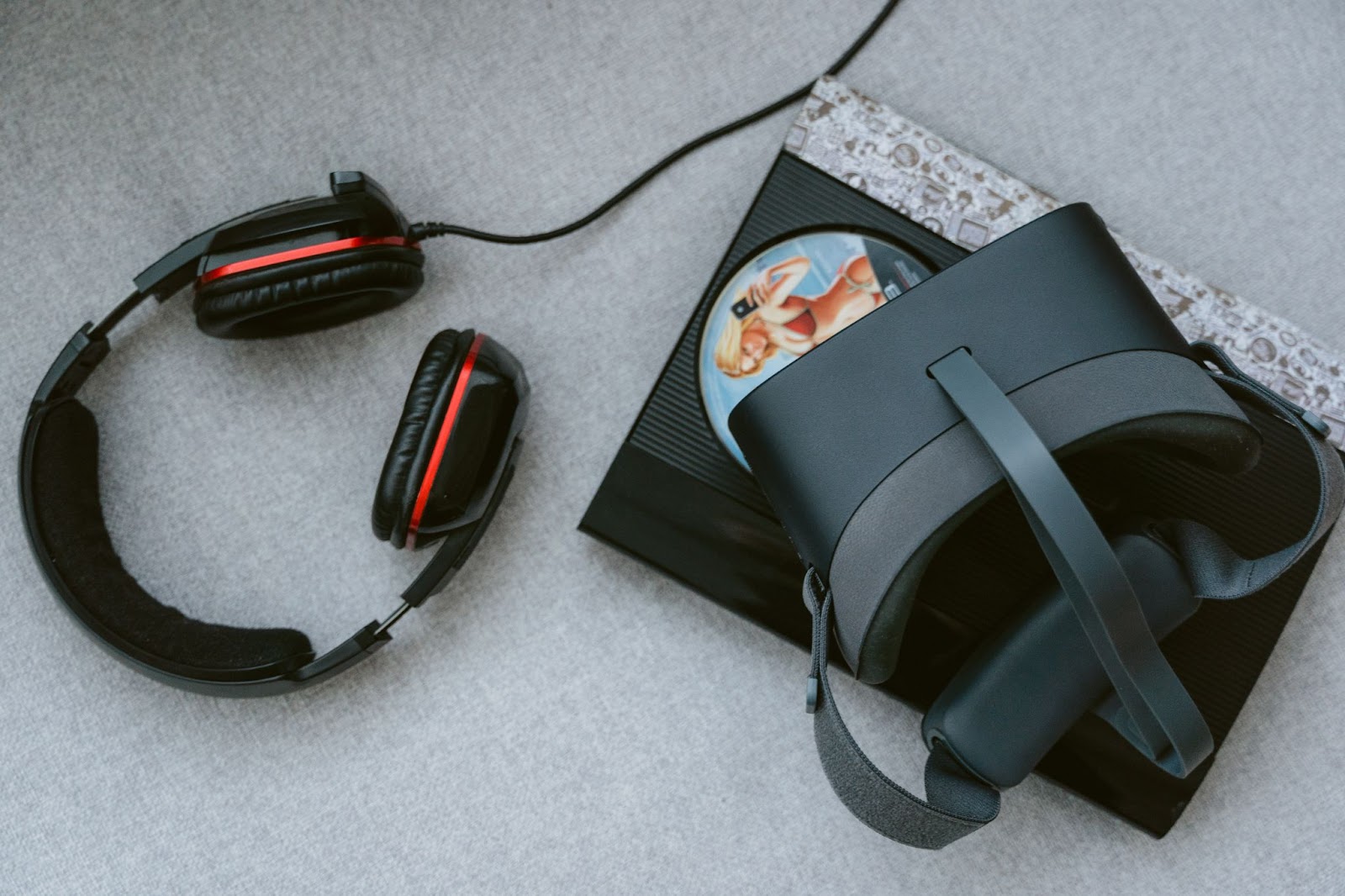“
Key Takeaways
- Understanding Essential Components: Grasp the key elements of web design including layout, color schemes, typography, navigation, responsiveness, and accessibility to create visually appealing and functional websites.
- Visual Hierarchy Matters: Learn how to organize website elements effectively using size, contrast, alignment, and whitespace to guide user attention and enhance readability.
- Emphasis on User Experience: Prioritize user needs by creating intuitive navigation and optimizing for mobile devices, ensuring an enjoyable and seamless browsing experience.
- Adopt Best Practices: Implement essential guidelines, such as maintaining a consistent color palette, clear typography, and optimizing loading speed, to improve both user engagement and search engine rankings.
- Utilize Design Tools: Take advantage of beginner-friendly design software like Adobe XD, Figma, and Canva, along with online learning platforms like Coursera and Udemy, to enhance your web design skills.
- Ensure Accessibility: Incorporate accessibility features like alt text and high-contrast color combinations to make your website usable for all individuals, including those with disabilities.
In today’s digital age, a strong online presence is essential for any individual or business. Web design plays a crucial role in creating that presence, making it vital for beginners to grasp the fundamentals. Understanding the basics of web design not only enhances creativity but also lays the groundwork for building user-friendly and visually appealing websites.
From layout and color schemes to typography and navigation, each element contributes to the overall user experience. With the right knowledge and tools, anyone can embark on the journey of crafting stunning websites. This article will guide beginners through essential web design principles, helping them turn their ideas into reality and ensuring they’re equipped to make a lasting impression online.
web design basics for beginners
Web design basics encompass several key elements that contribute to an effective online presence. Each component plays a crucial role in creating engaging and functional websites.
Layout
Layout refers to the arrangement of visual elements on a web page. A well-structured layout guides users through the content. It utilizes grid systems to maintain consistency and align elements properly. Clarity and hierarchy are vital; headers, subheaders, and body text should be distinct. Example layouts include single-column, multi-column, and card-based designs.
Color Schemes
Color schemes influence user perception and experience. Understanding color theory aids in selecting harmonious color combinations. Complementary, analogous, and triadic color schemes create visual interest. Choosing contrasting colors for text and backgrounds enhances readability. For example, a dark background with light text often increases legibility.
Typography
Typography involves the selection and arrangement of typefaces. A clear typographic hierarchy improves content scannability. Using no more than two to three font families maintains consistency. Sans-serif fonts often enhance readability for digital content. Font size and line spacing can affect user experience significantly.
Navigation
Navigation determines how users interact with a website. A logical structure and intuitive navigation menu enhance usability. Common navigation elements include top menus, sidebars, and breadcrumb trails. Ensuring that links are descriptive helps users understand what to expect. For example, using “”Contact Us”” is more informative than simply “”Click Here.””
Responsiveness
Responsiveness ensures a website displays well across various devices, including desktops, tablets, and smartphones. Employing fluid grids and flexible images allows for adaptive layouts. Mobile-friendly designs increase accessibility, catering to users’ varied behaviors. Testing across multiple devices and screen sizes is essential for achieving optimal responsiveness.
Accessibility
Accessibility focuses on making websites usable for all individuals, including those with disabilities. Implementing features like alt text for images and semantic HTML improves user experience. Adhering to WCAG (Web Content Accessibility Guidelines) ensures compliance and inclusivity. Tools for testing accessibility can help identify areas of improvement.
Each of these web design basics contributes to creating functional and engaging websites, empowering users to interact meaningfully with online content.
Essential Principles of Web Design
Web design encompasses various principles crucial for creating effective and engaging websites. Understanding these principles helps users develop sites that not only attract visitors but also enhance their experience.
Visual Hierarchy
Visual hierarchy organizes elements on a page to convey importance and guide user attention. Designers can achieve effective visual hierarchy by:
- Size: Larger elements grab attention and indicate significance. Important headings or call-to-action buttons should be noticeably larger than body text.
- Contrast: High contrast between text and background enhances readability. For example, dark text on a light background provides clarity and improves comprehension.
- Alignment: Proper alignment of elements creates a clean, organized look. Consistent alignment also aids in reinforcing relationships among content sections.
- Whitespace: Effective use of whitespace separates elements, preventing clutter. This enhances focus on individual components and fosters an uncluttered experience.
- Color Wheel: The color wheel showcases primary, secondary, and tertiary colors, aiding in creating harmonious palettes. Understanding complementary and analogous color schemes ensures visual appeal.
- Psychology of Color: Different colors evoke specific emotions. For example, blue often conveys trust, while red can signify urgency. Designers select colors based on the intended message and target audience.
- Accessibility: Ensuring color choices maintain adequate contrast for readability benefits users with visual impairments. Tools like contrast checkers help verify compliance with accessibility standards.
- Consistency: Using a consistent color scheme throughout the website reinforces brand identity. Limiting the number of colors used fosters a cohesive look and strengthens user recognition.
Key Elements of Effective Web Design
Effective web design incorporates several critical elements that work together to create a user-friendly experience. These elements include typography, layout, and grid systems, all of which significantly impact how users interact with a website.
Typography
Typography plays an essential role in web design by influencing readability and user engagement. Choosing clear, legible fonts enhances content scannability. Designers recommend using no more than three font families to maintain consistency throughout the site. Font sizes should vary to establish visual hierarchy, directing user attention to important information. Additionally, contrasting text color against background colors improves visibility, ensuring that users can easily read content regardless of device or screen size.
Layout and Grids
Layout establishes the overall structure of a website, allowing for efficient navigation and user interaction. Utilizing grid systems creates balanced designs, making it easier for users to find information. Grids ensure alignment, consistency, and proportionality among elements on the page. Each layout should guide users naturally through content, emphasizing essential areas while minimizing distractions. Responsive design techniques optimize layouts for various devices, maintaining usability across smartphones, tablets, and desktops. Consistent layout practices reinforce a cohesive brand image, enhancing user trust and engagement.
Tools and Resources for Beginners
Beginners in web design can utilize various tools and resources to streamline their learning process and enhance their skills. The following sections highlight essential design software and recommended online learning platforms.
Design Software
Design software plays a crucial role in creating visually appealing websites. Below are some popular options suitable for beginners:
- Adobe XD: Offers intuitive interface design and prototyping tools, ideal for creating interactive wireframes.
- Figma: Enables real-time collaboration on design projects with a cloud-based environment, making it accessible from any device.
- Sketch: Focuses on vector graphics and provides a robust suite of design tools tailored for web and UI design.
- Canva: Simplifies graphic design with drag-and-drop features, providing templates that help create eye-catching visuals quickly.
Each tool serves distinct purposes, aiding beginners in developing their design capabilities effectively.
Online Learning Platforms
Online learning platforms provide valuable resources for beginners to understand web design concepts. Consider these popular platforms:
- Coursera: Offers courses from reputable institutions, covering both foundational web design principles and advanced techniques.
- Udemy: Hosts a vast selection of affordable web design courses, allowing learners to choose specific topics that match their interests.
- LinkedIn Learning: Combines professional courses with a focus on industry-standard practices, helping beginners build practical skills.
- Codecademy: Provides interactive coding lessons focused on web development, essential for understanding the technical aspects of web design.
These platforms empower beginners to learn at their own pace and gain the knowledge necessary to create effective websites.
Best Practices for Web Design
Implementing best practices in web design ensures effectiveness and enhances user experience. Below are essential guidelines to follow:
- Prioritize User Experience (UX)
Prioritizing UX includes understanding user needs and designing a seamless navigation experience. Easy-to-find information leads to increased engagement and satisfaction.
- Adopt a Mobile-First Approach
Adopting a mobile-first approach focuses on optimizing websites for smaller screens, ensuring responsive design and functionality across devices. A significant percentage of users access websites via mobile devices, emphasizing the importance of this practice.
- Use a Consistent Color Palette
Using a consistent color palette reinforces brand identity and enhances the aesthetic appeal of a site. Select a primary color accompanied by complementary shades to maintain visual harmony throughout the website.
- Maintain Clear Typography
Maintaining clear typography facilitates readability. Limit font choices to two or three families, ensuring they complement one another and enhance visual hierarchy across headings and body text.
- Optimize Loading Speed
Optimizing loading speed impacts user retention and search engine ranking. Compress images, minimize code, and leverage caching for improved performance, aiming for a load time of under three seconds.
- Create Intuitive Navigation
Creating intuitive navigation involves organizing menus and links logically. Utilize descriptive labels for navigation items to guide users effectively, minimizing the steps needed to find information.
- Incorporate Visual Hierarchy
Incorporating visual hierarchy guides users’ attention effectively. Utilize size, contrast, and whitespace to emphasize key elements, thereby enhancing scannability and facilitating quick comprehension.
- Ensure Accessibility
Ensuring accessibility addresses the needs of individuals with disabilities. Include alt text for images, provide keyboard navigation, and use high-contrast color combinations to promote inclusivity.
- Utilize Responsive Design
Utilizing responsive design techniques ensures websites adapt to different screen sizes. Fluid grids, flexible images, and CSS media queries contribute to a consistent experience across devices.
- Regularly Test and Update
Regularly testing and updating the website keeps content fresh and relevant. Perform usability testing to gather user feedback and implement necessary changes, enhancing overall functionality and user satisfaction.
By following these best practices, designers enhance usability and foster a positive interaction between users and the website.
Establish A Strong Online Presence
Mastering web design basics is essential for anyone looking to establish a strong online presence. By understanding layout color schemes typography and navigation beginners can create websites that are not only visually appealing but also user-friendly.
Emphasizing responsiveness and accessibility ensures that websites cater to a diverse audience making them more effective. With the right tools and resources at their disposal beginners can confidently transform their ideas into engaging online experiences.
By applying these foundational principles and best practices anyone can significantly enhance user experience and make a lasting impression in the digital landscape.”






